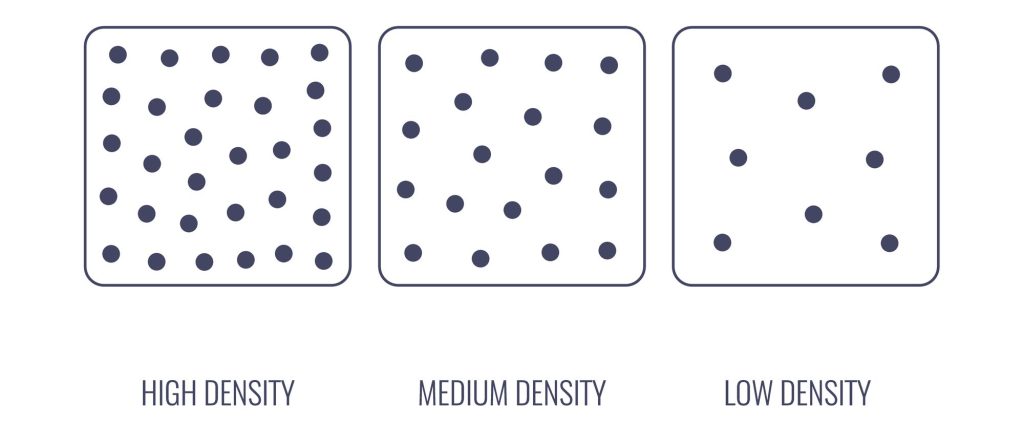In hair restoration surgery, understanding the concept of density is paramount. Grasping the intricacies of hair density can significantly impact the success and satisfaction of a hair restoration procedure. In this comprehensive guide, we will delve into the essence of hair density, its significance, and how it shapes the outcomes of hair restoration surgeries.
What is Hair Density?
Hair density refers to the number of hair follicles per unit area of the scalp. It’s a critical factor in determining the natural appearance of hair and plays a pivotal role in achieving a cosmetically pleasing outcome in hair restoration procedures. While hair thickness and texture contribute to overall density perception, true density lies in the balance between hair follicles and the available scalp area.

Significance in Hair Restoration Surgery
Hair loss can have a profound impact on an individual’s self-esteem and confidence. This is where hair restoration surgery comes into play, offering a solution to combat hair thinning and balding. The concept of density is central to the success of these procedures, as it directly influences the final aesthetic result. We measure each patient’s density and use that number to determine how much hair we are safely able to take during a hair transplant. Knowing each patient’s density also allows our surgeons and hair restoration team to transplant the hair appropriately for a natural look.
Understanding Patient-Specific Density
Every individual’s scalp is unique, and the ideal hair density can vary from person to person. Factors such as hair color, texture, scalp color, and skin tone all contribute to the perception of density. Moreover, the extent of hair loss and the available donor hair follicles play a crucial role in determining achievable density. Our skilled hair restoration surgeons, Dr. Quatela, Dr. Lee, and Dr. Montague, will carefully assess these variables to design a personalized treatment plan that balances patient expectations with realistic outcomes.
Density Calculation and Distribution
In hair restoration surgery, density is typically expressed as the number of grafts (hair follicles) per square centimeter (grafts/cm²) of the recipient area. The distribution of grafts across different zones of the scalp is strategically planned to create a natural and harmonious appearance. The hairline, mid-scalp, and crown areas may require different densities to achieve optimal results.
Advanced Techniques to Enhance Density
Advancements in hair restoration techniques have revolutionized the field, enabling surgeons to achieve higher levels of density and improved outcomes. Some of these techniques include:
- Follicular Unit Transplantation (FUT): Also known as the strip method, FUT involves harvesting a strip of the scalp from the donor area (the back of the head, where the hair is genetically resistant to the hormones that cause balding), which is then dissected into individual follicular units for transplantation. This method allows for precise placement of grafts, contributing to better density.
- Follicular Unit Extraction (FUE): FUE involves extracting individual follicular units directly from the donor area using the Dutch method (a handheld, motorized system that employs the use of a trumpet-shaped punch without the use of suction). This technique minimizes scarring and allows for strategic placement of grafts, enhancing density in targeted areas.
In the realm of hair restoration surgery, density is not merely a number; it’s an art that requires precision, expertise, and a deep understanding of each patient’s unique characteristics. As a patient, understanding hair density can help you set realistic expectations. For our surgeons, their mastery of the science of density leads to transformative results for our patients.
If you are interested in options for thinning or lost hair, contact our office to speak to a Patient Consultant and set up a personal consultation with Dr. Quatela, Dr. Lee, or Dr. Montague.
Follow @quatelacenter_hairrestoration for informative content from our surgeons and patient results!

Leave a Reply